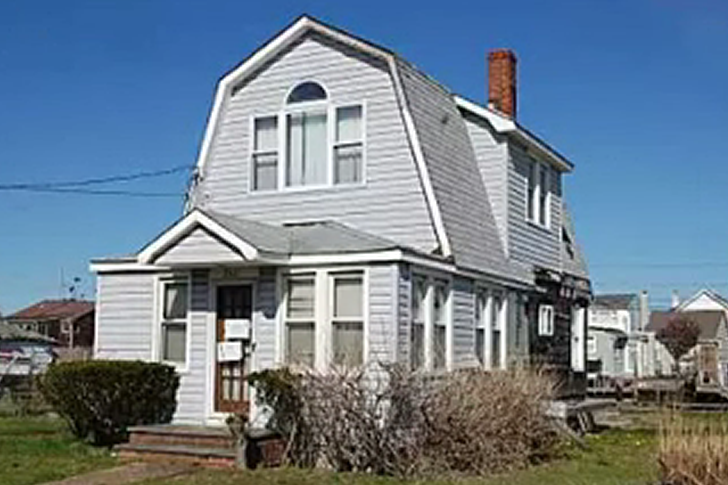How to Turn Abandoned Homes into Opportunities
Abandoned homes, often left vacant due to foreclosure, economic shifts, or natural disasters, can be found across urban, suburban, and rural areas. According to the U.S. Government Accountability Office, there are approximately 1.7 million abandoned homes in the United States. These properties present both challenges and opportunities for potential buyers.

Steps to Acquire Abandoned Homes
1. Research and Identify Properties
Finding abandoned homes requires thorough research. Use online databases, local government websites, and real estate listings to identify potential properties.
- Online Databases: Websites like RealtyTrac and Zillow provide listings of foreclosed and abandoned properties.
- Local Government Websites: Many cities and counties have online databases of abandoned properties.
- Real Estate Listings: Check real estate websites for listings of foreclosed or abandoned homes.
2. Verify Ownership and Property Status
Before making any decisions, verify the ownership and status of the property. This involves checking public records and contacting local authorities.
- Public Records: Use local county records to check the property’s legal status.
- Local Authorities: Contact the county assessor’s office or local land bank for more information.
3. Evaluate the Condition of the Property
Conduct a thorough evaluation of the property’s condition. This may involve hiring a professional inspector to assess structural integrity, plumbing, electrical systems, and potential hazards.
- Professional Inspection: Hire a licensed inspector to evaluate the property’s condition.
- Cost Estimation: Obtain estimates for necessary repairs and renovations.
4. Determine the Purchase Process
The process of purchasing an abandoned home can vary depending on its status and location. Common methods include:
- Public Auctions: Many abandoned homes are sold through public auctions.
- Direct Purchase from Owners: If the property is not in foreclosure, you can negotiate directly with the owner.
- Land Bank Programs: Some cities have land bank programs that sell abandoned properties at reduced prices.
Table: Price and Features of Abandoned Homes
| City | Average Purchase Price | Average Renovation Cost | Potential Uses |
|---|---|---|---|
| Detroit, MI | $30,000 | $60,000 | Affordable Housing |
| Cleveland, OH | $25,000 | $50,000 | Community Centers |
| Baltimore, MD | $40,000 | $55,000 | Small Businesses |
| St. Louis, MO | $35,000 | $45,000 | Green Spaces |
| Philadelphia, PA | $50,000 | $65,000 | Art Projects |
| New Orleans, LA | $45,000 | $70,000 | Affordable Housing |
| Buffalo, NY | $30,000 | $40,000 | Community Centers |
| Flint, MI | $20,000 | $35,000 | Small Businesses |
| Gary, IN | $15,000 | $30,000 | Green Spaces |
| Camden, NJ | $25,000 | $50,000 | Art Projects |
Potential Challenges
Acquiring abandoned homes can be complex and fraught with challenges:
- Legal Complications: Ownership and title issues can complicate the acquisition process.
- Funding: Securing financing for an abandoned property can be difficult.
- Renovation Costs: Abandoned homes often require significant renovations.
Financial Considerations
Understanding the financial aspects is crucial when acquiring abandoned homes. Here are some key points:
- Purchase Price: Abandoned homes can often be purchased at a lower price than market value.
- Renovation Costs: Budget for extensive renovations, including structural repairs, plumbing, and electrical work.
- Financing Options: Explore financing options such as renovation loans, personal loans, or investment partnerships.
Detailed Investment Table
| Location | Average Cost ($) | Market Value ($) | Investment Potential |
|---|---|---|---|
| Detroit, MI | 6,500 | 65,000 | 9 |
| Baltimore, MD | 13,000 | 156,000 | 8 |
| St. Louis, MO | 10,400 | 104,000 | 7 |
| Philadelphia, PA | 19,500 | 182,000 | 6 |
| Cleveland, OH | 9,100 | 91,000 | 8 |
| Birmingham, AL | 7,800 | 84,500 | 9 |
| New Orleans, LA | 26,000 | 260,000 | 5 |
| Flint, MI | 3,900 | 39,000 | 9 |
| Buffalo, NY | 13,000 | 130,000 | 7 |
| Gary, IN | 5,200 | 52,000 | 9 |
FAQs About Acquiring Abandoned Homes
Q1: How can one finance the purchase of an abandoned home?
A1: Financing options include renovation loans, personal loans, and investment partnerships. Some buyers use cash or combine financing methods to cover both purchase and renovation costs.
Q2: What are the risks of buying an abandoned home?
A2: Risks include legal complications, high renovation costs, and potential safety hazards. Conduct thorough due diligence before purchasing.
Q3: Are there programs to help with abandoned homes?
A3: Yes, various federal, state, and local programs provide grants and incentives for renovating abandoned properties. Examples include HUD’s Good Neighbor Next Door program and local land bank initiatives.
Q4: How do abandoned homes affect local communities?
A4: Abandoned homes can decrease property values, increase crime rates, and lead to urban decay. However, revitalizing these properties can improve community aesthetics and safety.
Real-World Examples
Several cities have successfully transformed abandoned homes:
- Detroit, MI: The Detroit Land Bank Authority has been working to renovate and sell abandoned properties, helping to revitalize neighborhoods.
- Baltimore, MD: The Vacants to Value program has turned many abandoned homes into affordable housing.
- New Orleans, LA: Post-Hurricane Katrina efforts have led to the restoration of many abandoned homes.
Strategies for Revitalization
Revitalizing abandoned homes requires a coordinated effort from various stakeholders:
- Government Initiatives: Policies and programs that provide funding and support for renovation projects.
- Community Engagement: Involving local communities in the planning and execution of revitalization projects.
- Private Investment: Encouraging private investors to fund the renovation of abandoned properties.
Conclusion
Acquiring abandoned homes presents both challenges and opportunities. By understanding the processes, financial considerations, and potential uses, buyers can turn these properties into valuable assets. Revitalizing abandoned homes can lead to increased property values, reduced crime rates, and improved quality of life for residents.
References
- U.S. Government Accountability Office: https://www.gao.gov/
- RealtyTrac: https://www.realtytrac.com/
- Detroit Land Bank Authority: https://www.buildingdetroit.org/
- Vacants to Value (Baltimore): https://dhcd.baltimorecity.gov/vacants-value







Recent Comments